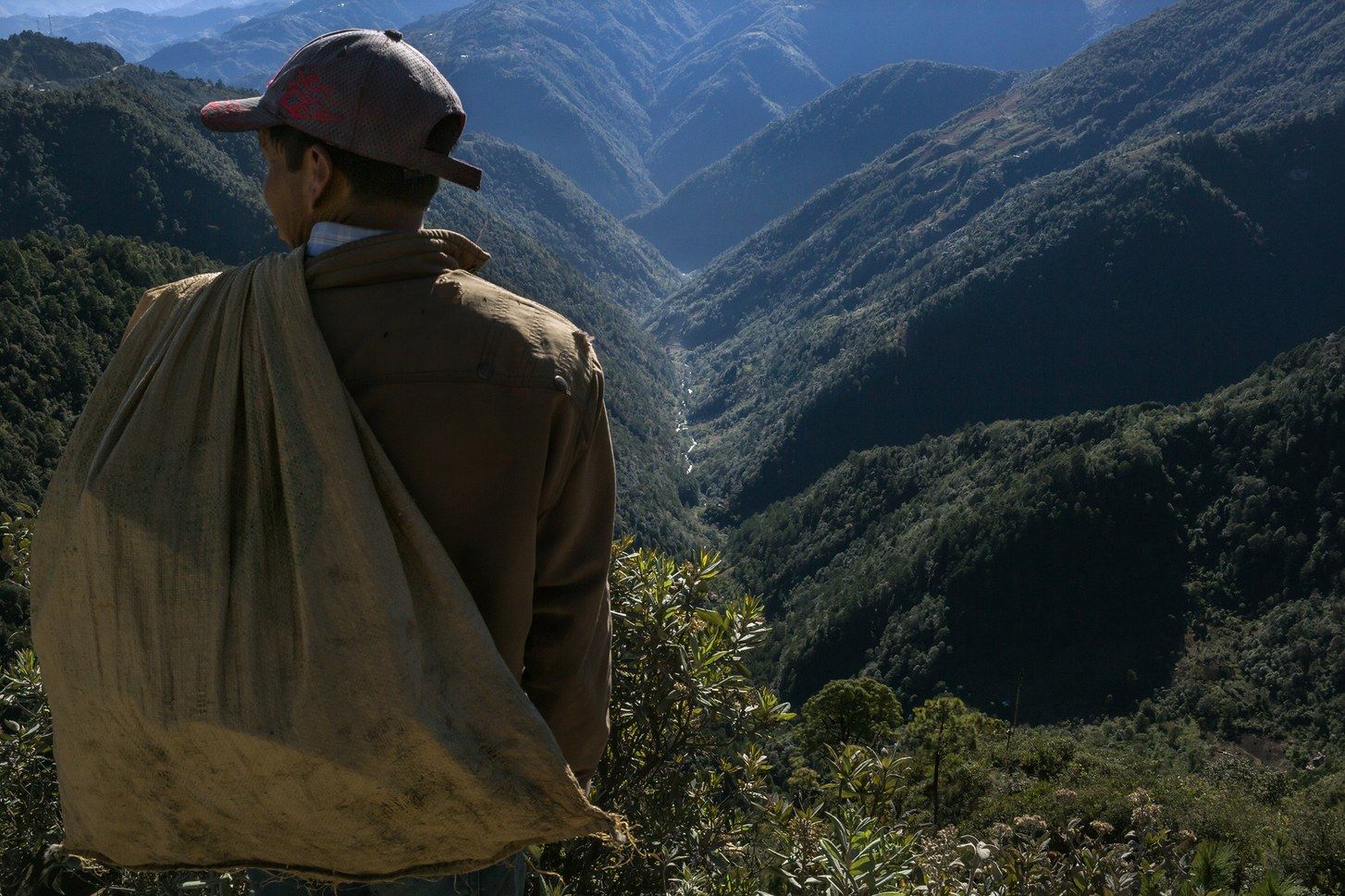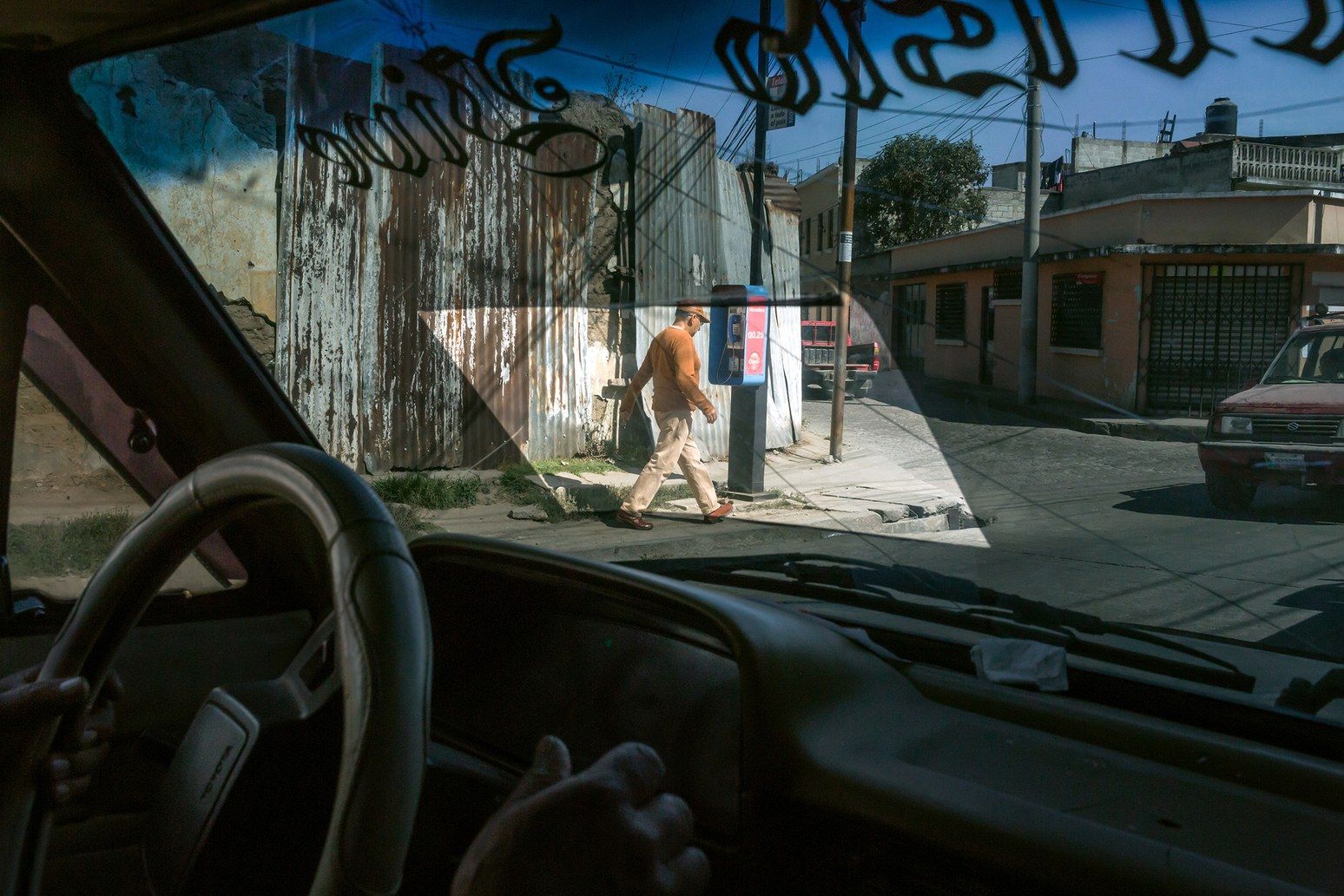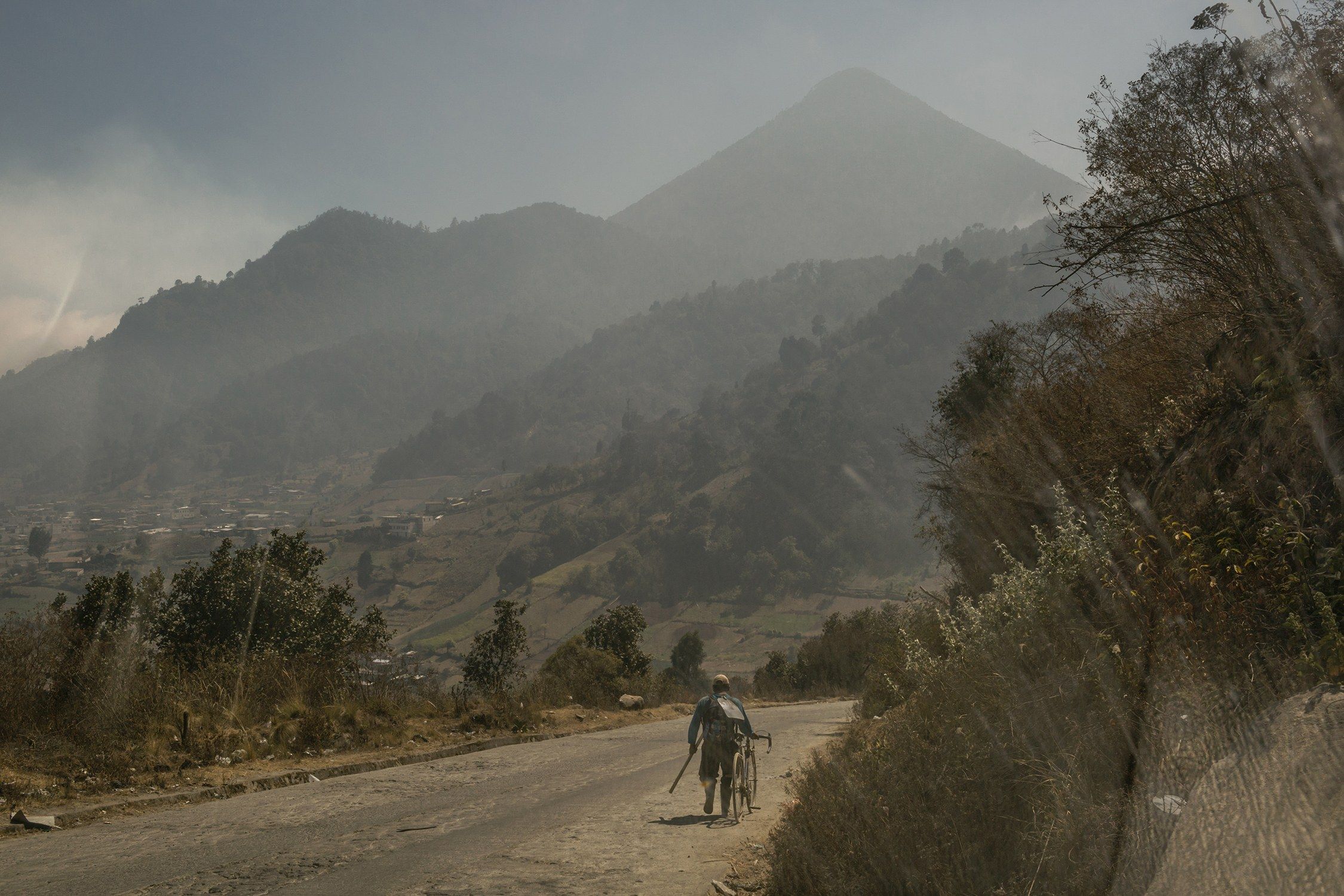This is the second piece in a series on the forces driving migration from Guatemala. You can read the previous installment here.
When Elias López decided to leave his home in the western highlands of Guatemala for the United States, in 2014, the going rate to hire a smuggler was ninety thousand quetzales, or about twelve thousand dollars. López, who was eighteen, worked two jobs at the time, one in construction and the other as a day laborer harvesting vegetables, and the combined pay was barely enough to cover his living expenses. A lending coöperative, essentially a small local bank, offered loans at a low interest rate, but with one condition: López would need to offer collateral. In exchange for a loan of fifty-five thousand quetzales, he opted to mortgage the plot of land where his family grew their food. “I would pay off the loan once I made it to the United States,” he recalls thinking.
In recent years, the rise of criminal cartels in Mexico and the newly aggressive posture of state authorities have made it much more difficult to reach the U.S. Beginning in 2014, at the urging of the Obama Administration, Mexican authorities increased their apprehension rate of Central Americans by eighty-five per cent. Even before Donald Trump took office, the U.S. government developed a new battery of measures—termed the “Consequence Delivery System,” which included prolonged detention, criminal charges, and deliberate deportation of migrants to remote locations in their home countries—to make crossing the border so gruelling that people would decide to abandon the trip altogether. Nevertheless, the number of Central Americans coming to the U.S. has continued to rise, as has the pace of apprehensions: of the more than three hundred Guatemalans who leave for the U.S. each day, two-thirds are arrested and deported by Mexican and American immigration agents. One outgrowth of increased enforcement at the border is that the price many migrants are forced to pay smugglers has surged.
López set out for the U.S. with a friend, and they advanced through southern Mexico without incident. As they neared the U.S. border, though, their smuggler began acting strangely. López noticed him snorting drugs; on a few occasions, apparently high, he threatened to kill them. One afternoon, in the Sonoran Desert of Mexico, their smuggler disappeared. “We were walking, and then he just left us,” López said. He and his friend got lost, wandering in circles for eleven days without food or water. His friend, who’d begun to feel sick from dehydration, grew weak and lost weight, his skin turning a pallid gray. One morning, when they were about fifty miles from the U.S., his friend said he couldn’t go any farther. He died in López’s arms. López walked the rest of the day and night without stopping, and reached the border early the next morning. He turned himself in to U.S. Border Patrol, and, a month and a half later, was deported.
Once López returned to Guatemala, the idea of trying to make the trip again horrified him. “I could still see my friend’s face,” he said. But there was still the issue of mounting payments on his loan. The prospect that compelled his first trip—finding work and getting paid in U.S. dollars—now seemed even more urgent with his family’s land hanging in the balance. Last year, he decided to use a different smuggler and to try to enter the U.S. through Arizona. “This time I went to a bank, and I told them I needed a loan to start a business,” he said. His uncle had agreed to serve as a reference, and the bank eventually extended López a loan of eighty-five thousand quetzales, at a standard rate of interest. As collateral, he put up his family’s house, knowing that if he fell behind in his bank payments, they would be homeless. In November, López tried to cross the border for the second time, but he was again apprehended. He now owes the bank one hundred and fifty thousand quetzales, or about nineteen thousand five hundred dollars.
López, who is twenty-three, with close-cropped hair and a muscular build, rises early each day and borrows a friend’s motorbike to search for construction sites. “I go anywhere I see an unfinished building, and I ask whoever I can find if they’re hiring,” he told me. When he can find a paying construction shift, he walks away with sixty quetzales (less than eight dollars) at the end of the day. He has two younger brothers, ages twenty and eighteen—one has a wife and child of his own, and the other contributes his wages to the family’s household expenses. They live with their mother, grandparents, and ten other relatives in a hamlet outside Quetzaltenango, the second largest city in Guatemala, where money has become so tight that they can only afford to eat meat once a week. At the end of every month, López travels forty minutes from home to a bank branch in Quetzaltenango to make an installment payment of a thousand quetzales (a hundred and thirty dollars) on his loan. “After everything that has happened, I don’t want to go back to the United States,” López told me. “I’m just not sure if I should try again.”
Migrants typically pay smugglers in two parts—the first, amounting to roughly half of the over-all sum, is a down payment known as the enganche. The rest is owed when the migrant reaches the U.S. In theory, these payments buy migrants three chances to cross the border, but, in actuality, one failed attempt can undermine the whole scheme. In López’s case, he felt his smugglers had abandoned him and his friend in the most difficult stretch of the journey. “I didn’t want to go back with them another time because I no longer trusted them,” he told me. When he tried a different route, with a new smuggler, he ended up spending more than a month in immigration detention. His arrangement, he told me, granted him two more chances to cross, but only if he undertook them within a few weeks of his first attempt—a practical impossibility because of his detention.
A number of factors have caused smugglers’ fees to rise, from frequent payouts to criminal groups along the route to the simple dictates of supply and demand. But another trend has simultaneously kept prices in check. More families are attempting to enter the U.S. by seeking asylum, either at official ports of entry, or by allowing themselves to get apprehended elsewhere along the border. From a smuggler’s standpoint, that lowers the degree of difficulty for the costliest part of the trip—the salto, as it’s known, or final “jump” into the U.S. Many of them have offered “package deals,” with discounts to families heading north, which are not an option for single adults like López. In any case, the U.S. government has recently implemented a policy that may begin to change the calculations for everyone. Known as Remain in Mexico, it forces asylum seekers to wait indefinitely in Mexico while their humanitarian claims move through the backlogged American immigration courts. As a result, more migrants are attempting to sneak across the border, delivering a fresh windfall in profits to smugglers.
There is also an epidemic of debt spreading among families who’ve taken out loans to pay for their trips. “Tens of thousands of Guatemalans assume debt every year,” Aracely Martínez, an immigration expert at the Universidad del Valle de Guatemala, told me. “It’s common throughout the entire country, especially if someone doesn’t have a lot of financial support from their family, or if they don’t have friends in the United States.” Some, like López, never make it to the U.S., but others who do are often deported later, before they have enough time to pay down their loans, which usually takes between six months and a year of steady work in the U.S. For those who are apprehended, there’s an additional problem: prolonged detention means months of inactivity in which the interest on a person’s loan continues to run. Evictions have grown increasingly common in some areas where debts have become unpayable. “I have three relatives who have been kicked out,” a father and former migrant told two American researchers in an article published last year in the journal Antipode. “Now they’re living with other people. . . . That’s why many people after their second deportation keep on trying.”
Richard Lee Johnson, a doctoral candidate at the University of Arizona who is based in Quetzaltenango, has spent the last five years studying the relationship between debt and migration, and has interviewed dozens of immigrants and their families in the western highlands. What he’s found is a feedback loop in which immigrants who fail to reach the U.S. become stuck in a cycle of future attempts. “These days, average migrant debts have climbed so high that a U.S. wage is the only real way to pay them off,” Johnson told me. The Trump Administration has only exacerbated the situation. By focussing almost exclusively on harsher enforcement at the border, it has made crossing much more painful but no less urgent for those who are trying to alleviate mounting debts. “Deportation doesn’t seem to deter undocumented migration,” Johnson said, “so much as to reinforce it.”
Early one morning in February, López and his grandfather picked me up in Quetzaltenango, where I was staying, and we drove up a steep, rock-filled road in a battered white pickup truck with the words “Jesus Christ Lives” on its windshield. The final stretch was so steep that we had to abandon the vehicle and climb through the woods until we reached a clearing that opened onto a valley. Their house is small and made of mud, and its cracked walls were patched with scraps of metal. Lopéz’s grandfather, Don Julio, who is sixty-three, compact, and spry, with a full head of gray hair, has lived on this land all his life. When he first started working in the fields, in the nineteen-sixties, he earned fifty centavos for a day’s labor. By the mid-seventies, he said, it was possible to make a full quetzal per day. “I thought about leaving for the U.S. in 1986,” he said. “Back then, the smugglers were charging between two and five thousand quetzales. But I still didn’t have enough money.”
There were only a few other houses within view, all of them teetering structures, ringed with small plots of soil. “Our neighbors are in debt, too,” Don Julio said, pointing to a nearby house. “She left for the U.S, and her inheritance is that bit of land over there. She made it to the U.S., but is still trying to pay off her debt, so she went to the bank to get her land hipotecado”—mortgaged—“and they say the land now has two owners.”
López’s uncle had recently immigrated to Florida with his wife and two children, who are seven and eleven years old. “They made it by seeking asylum,” López told me. In the meantime, the remaining family members, including López, have moved into his uncle’s house, a few hundred feet down the hill from their own. López was reluctant to admit it, but his uncle’s success stung: López was deported twice, while his uncle made it to the U.S. on his first try. “I can’t ask for asylum at this point,” he said. “All I can do is ask the U.S. government for forgiveness, or else try to cross again illegally.” He recognized that the odds were against him, but he had to concede that, at a certain point, he might have little choice but to try again. “The only way I could ever take care of this debt is to get to the United States,” he said. There were tears in his eyes as he said this; when I looked over at his grandfather, he was crying, too. “If you don’t make it to the U.S., the bank takes your house,” Don Julio said. “If you do make it, it’s a blessing from God.”




